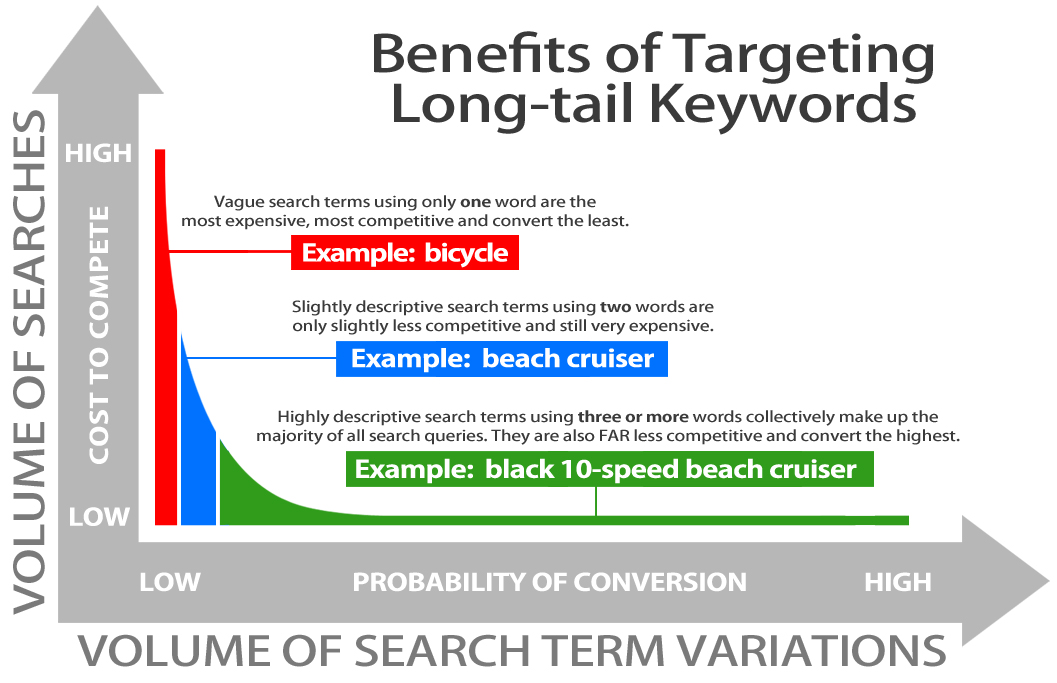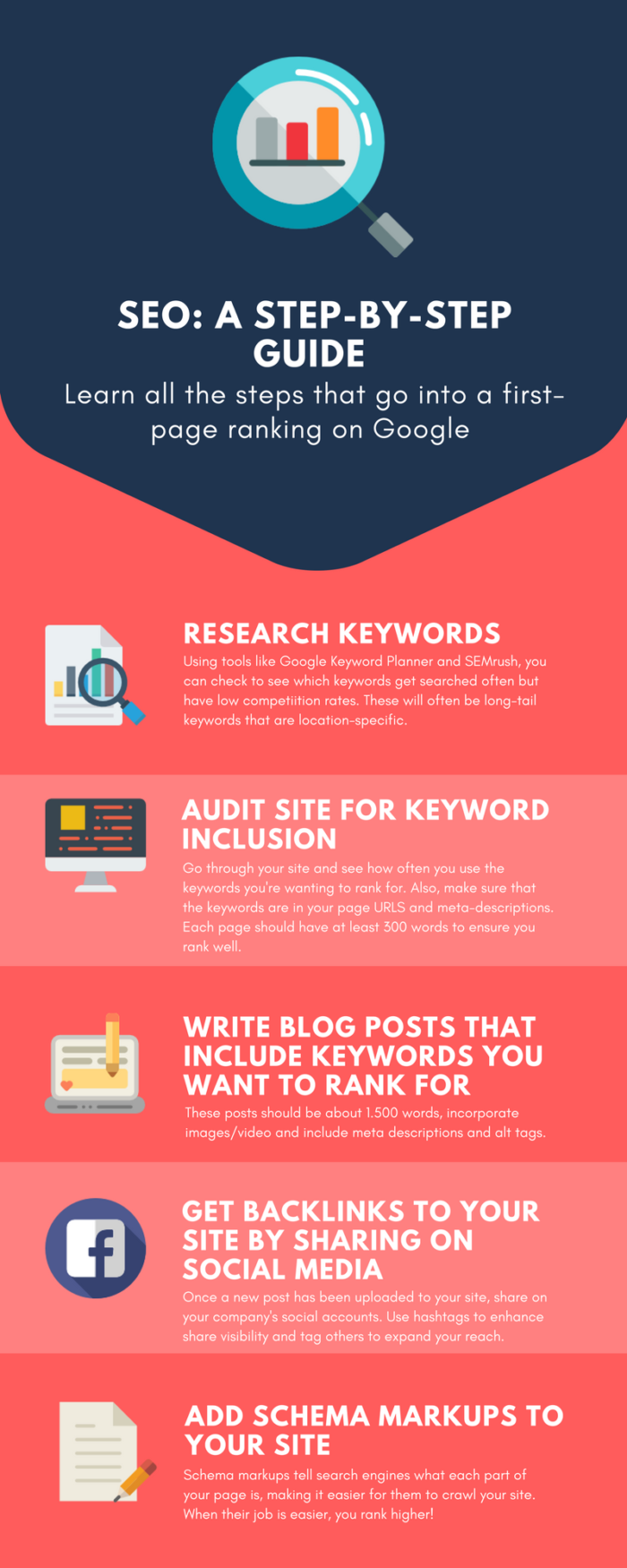We’ve drafted up a guide detailing some of the most under-appreciated tactics that can boost your SEO, including internal linking, URL optimization and long-tail keywords for semantic search. Become a master of these Kansas City SEO tricks to reap the rewards or sit back and let your competitors steal the search engine spotlight.
Internal Linking
According to this article from Search Engine Land, interlinking can be an easy way to increase your SEO and enhance user experience on your site. You open pathways to web pages that may have been previously neglected, and you’re able to organize the pages categorically based on the keywords used in the link’s URL and anchor text. A new setting in Yoast SEO actually allows you to see how many internal links are in the post and how many internal links there are on your site that are linking to the post. By utilizing anchor text keywords, you help users understand what they’re navigating to. When done correctly, internal linking even organizes the site architecture and let’s search engines know which web pages are the most important. Links that search engines can’t pick up on include links that have been disavowed, links in search bars or submission fields, links in embedded plugins and links on webpages with more than 150 links.
Authority Flow
Where backlinks (links from websites outside your own) have a direct impact on Google’s algorithm, internal links only increase the flow of backlink authority between one page and another. Since a new blog post emerges from the digital womb with no authority or recognition, it’s essential that you feed it the deep links (preferably from home pages) that it needs. This transfers authority to the blog post, helping to index it faster and boost ranking.
Build a Pyramid
When organizing your internal links, you should follow a pyramid formation. This means the home page is at the top and cornerstone pages/category pages are directly beneath. These category pages deep-link to relevant blog or product pages. Pages that are directly within one link of the home page will be marked as the most important. You can leverage the homepage to spread links throughout your site (not just focus on one category page). Since it’s the most authoritative page on your site, the home page should be used wisely. It has this authority because it receives the most backlinks.
User Experience
Internal linking helps with user experience as well. It gives readers extra information and provides a breadcrumb trail that they can follow until they complete a conversion (ie: contact form or check out). When you bold these links to make them stand out, you increase your chances of users engaging even further with your site. It’s also important to go through and check for any broken links using tools like SEMRush. To combat broken links, you can either delete them or redirect them to a relevant web page. Include a link to a conversion on the page somewhere. For example, a ‘Contact Us’ link that takes you to a form you can fill out might be a good way to increase conversions. Call-to-actions work great as well, so phrase the linked anchor text so you’ll draw in clicks (ie: ‘contact us so we can get started on your digital marketing campaign’). If you don’t want to interrupt a user’s experience on your blog post, you should place these call-to-actions at the very end. This keeps users on your site.
Tags and Keywords
To properly index your site, you should include link tags or keyword tags within your page. This tells search engines what your page is all about. You should optimize the anchor text to reflect the topic of the page it’s linking to. Keyword variations in the anchor text ensures your page ranks for multiple relevant searches. Plus, repeated anchor text can make Google suspect spam. You want to shoot for three internal links per piece of content. If you don’t want Google to count the juice flow, you can include a rel=”nofollow” attribute on the link tag. These are typically found in comment sections to prevent users from trying to earn easy backlinks.
URLs
Though they often go unnoticed, your URL can have an impact on your search engine rankings. In fact, URL length ranks as #46 in Google’s ranking factors, and keywords in URLs rank as #51. Because of this, you need to make sure that you’re leveraging your URL to get the most SEO points. It’s best to use ‘.com’ over ‘.biz’ or ‘.tel’ in your URLs because it makes your page seem more trustworthy. HTTPS is also a better option than HTTP because it shows users and search engines that your site is secure (encrypted). This is especially important if you have an ecommerce site that collects personal information, like credit cards.
You should try to keep your URLs as short as possible to make it clear where the user will be directed. A good number to shoot for is between 50 and 60 characters. Going beyond 80 characters may even have a negative effect on your ranking. You can use either a hyphen or underscore between words in your URL; We suggest hyphens, since Google prefers hyphens. Google also prefers lowercase letters and dislikes stop words. In fact, stop words are ignored by search engines altogether. These words include a, an, or and but. These stop words normally overcomplicate URLs, and excluding them doesn’t always change the meaning of the title. You’re free to include these words if needed to understand what the article is about, but only in that instance.
When creating your URL, you should try to stick to a maximum of two folders per URL and include the keyword you’re wanting to rank for. A folder is indicated by a slash in your URL. Adding keywords into your URL gives you a slight edge over your competitors, plus it allows the URL to act as the anchor text if your content is copied without including anchor text to clarify. Try to stick to one or two keywords per URL, so it doesn’t look like you’re keyword stuffing.
Long-tail Keywords and Semantic Search
What’s great about long-tail keywords is that there aren’t that many people competing for them, and they indicate high user intent. This just means that if someone is searching for ‘air conditioning repair in Kansas City’, for example, they’re probably searching with the intent to request a service. Even though these types of words may have a lower search volume than broad keywords, you’re funneling in traffic that is seriously interested in what you have to offer. Typically, long-tail keywords are at least three words long, but they may be longer if you’re optimizing for location with a longer name or entire phrase (ie: ‘what is search engine optimization?’)
Long-tail keywords are also an important part of semantic search. Semantic SEO is when you incorporate meaning into the words that you use within your content. To properly monopolize on semantic search, you have to anticipate the intent of a search. The purpose behind semantic search is to improve accuracy, a feat which can be done through concept matching, synonyms and natural language algorithms. For example, if someone searches ‘what are good bikes for toddlers?’, you might want to optimize for ‘trikes for kids’ or ‘safe bicycles’ as well to ensure your content turns up in the search results.
Voice Search
It doesn’t hurt to optimize for voice search, especially with over 55% of millennials using voice search daily and bot integration taking over the web. Most newer vehicle have been equipped with voice controls, and Siri’s proven to be a great tool for older generations that don’t like dealing with search engines. If a user is presenting a search query to these voice-interpretive devices, they’re going to use long-tail keyword phrases like ‘where can I find water shoes near me?’ and commands with intent. It’s your job to create content that answers not only their initial query, but also any questions they may have after that. To figure out which keywords can aid in your semantic SEO, check out Google’s ‘related to search’ and ‘people who also ask’ sections. You can also try searching the topic you’re trying to write about in Google. See what aspects your competitors are writing about and which subjects seem to generate high Google rankings. The best perk to semantic SEO is that intuitive content can land you a spot above position one. That’s right—the ultimate alpha. This spot is reserved for featured snippets. If your semantic SEO is good enough, you can land this coveted spot reserved for precise answers to queries.
Contact Us
These tactics are used by professional Kansas City SEO specialists, but you can check out our blog post for some SEO basics that you can handle on your own. If you know SEO services could benefit your business but don’t want to tackle the project yourself, contact us. As a digital marketing agency, we can combine several services to give you the best ROI, including mobile search advertising, email marketing and social media.





